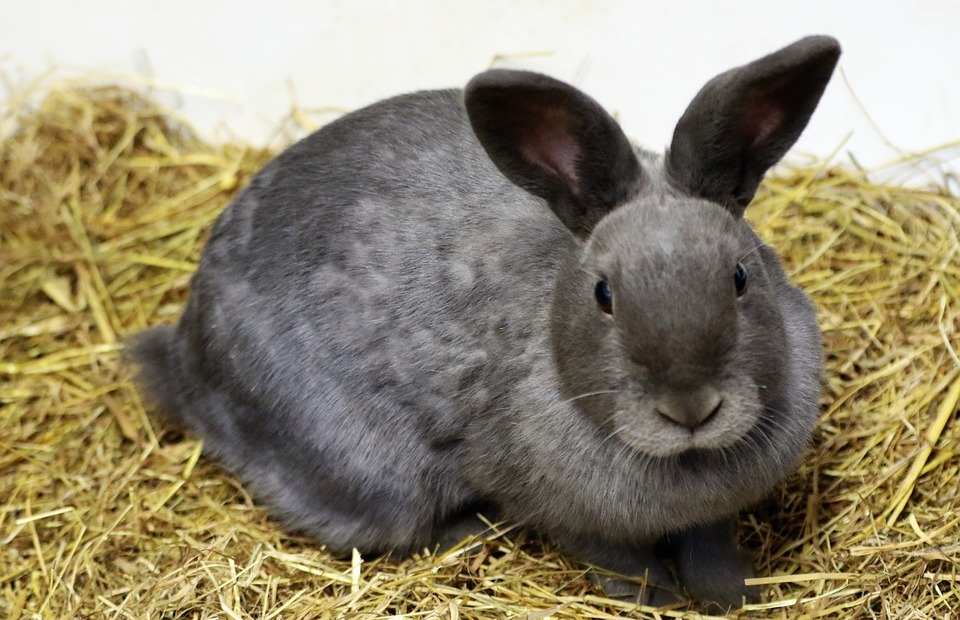This article provides a comprehensive guide to humanely removing rabbits from your yard, encompassing a variety of methods, strategies, and ethical considerations. We'll delve into the reasons why rabbits might be present in your garden, examine the potential harm they can cause, and discuss different approaches to deterring and relocating them. We'll also explore the ethical considerations involved in dealing with these creatures and emphasize the importance of humane practices. By understanding the nuances of rabbit behaviour and implementing the techniques outlined in this article, you can effectively manage rabbit populations in your yard while respecting their welfare.
Part 1: Understanding the Rabbit Problem

1.1 Identifying the Rabbit Species
- European Rabbit: The most common species in gardens, known for its large size and distinctive brown fur.
- Eastern Cottontail: Characterized by its white tail and reddish-brown fur, often seen in woodlands and fields.
- Black-Tailed Jackrabbit: Found in arid regions, easily identified by its long, black-tipped tail and large ears.
- Snowshoe Hare: Notable for its white winter coat, inhabiting forests and mountainous regions.
1.2 Rabbit Behaviour
- Social Structure: Rabbits live in colonies called warrens, consisting of multiple interconnected burrows.
- Diurnal and Nocturnal: Some species are primarily active during the day (diurnal), while others are active at night (nocturnal).
- Territorial: Rabbits establish and defend their own territories, often marking them with scent glands.
1.3 Factors Attracting Rabbits
- Food Sources: Grasses, clovers, vegetables, and fruits are common rabbit food sources.
- Water Sources: Rabbits require access to fresh water, whether from natural sources or artificial ones.
- Shelter: Dense vegetation, overgrown areas, and burrows provide protection from predators and harsh weather conditions.
- Breeding Season: Rabbits can reproduce prolifically, with females able to produce multiple litters per year.
Part 2: Assessing the Damage

2.1 Damage to Plants
- Gnawing: Rabbits gnaw on stems, leaves, and roots, causing damage to plants, including vegetables, flowers, and trees.
- Barking: Rabbits can strip bark from young trees, harming their growth and potentially killing them.
- Root damage: Burrowing rabbits can damage root systems of plants, affecting their health and stability.
2.2 Damage to Property
- Digging: Rabbits create burrows that can undermine foundations, fences, and pathways.
- Soil erosion: Their digging activities can disrupt soil structure, leading to erosion and water runoff.
Part 3: Humanely Removing Rabbits
3.1 Exclusion Methods
3.1.1 Fencing
- Material and Height: Choose a sturdy and durable material like chicken wire or metal mesh, and install a fence at least 3 feet high to prevent jumping.
- Burial Depth: Bury the fence at least 6 inches deep to discourage digging under the fence.
- Reinforcements: Use additional barriers like metal sheets, angled fencing, or wire mesh to strengthen vulnerable areas.
- Gate Security: Ensure all gates are securely closed and latched to prevent rabbit entry.
3.1.2 Plant Choices
- Rabbit-Resistant Plants: Choose plants known to be less appealing to rabbits, such as lavender, rosemary, marigolds, and garlic.
- Avoid Tempting Options: Limit planting vegetables, fruits, and other rabbit favourites.
- Protective Measures: Consider using cages or mesh barriers around vulnerable plants.
3.2 Repellents
3.2.1 Commercial Repellents
- Natural Ingredients: Look for repellents containing natural ingredients like garlic, peppermint oil, or chili pepper extract.
- Application Methods: Follow the manufacturer's instructions for application, often involving spraying or sprinkling around plants.
- Frequency: Reapply repellents regularly, especially after rainfall or watering.
3.2.2 Homemade Repellents
- Garlic and Chili Pepper Spray: Combine minced garlic, chili peppers, and water in a blender and spray the mixture around plants.
- Peppermint Oil Solution: Dilute peppermint oil with water and spray it around the perimeter of your yard.
3.3 Trap and Relocate
3.3.1 Live Traps
- Cage Traps: These are typically made of metal wire and have a door that triggers when the rabbit enters.
- Box Traps: Similar to cage traps but often have a smaller opening that the rabbit must squeeze through.
- Funnel Traps: These traps have a funnel-shaped entrance that guides the rabbit into a cage.
3.3.2 Trap Placement
- High-Traffic Areas: Place traps near burrows, feeding sites, or areas where rabbits are commonly seen.
- Baiting: Use appealing bait, such as carrots, apples, or leafy greens, to entice rabbits into the traps.
- Securing the Trap: Ensure the trap is securely placed on firm ground and that the door is properly closed.
3.3.3 Relocation
- Distance: Transport rabbits at least 5 miles away from your property to prevent them from returning.
- Suitable Habitat: Choose a location with ample food and shelter, preferably away from populated areas.
- Legal Considerations: Check local regulations regarding rabbit relocation and obtain any necessary permits.
Part 4: Ethical Considerations
4.1 Humane Practices
- Minimizing Harm: Prioritize methods that cause minimal pain, suffering, and stress to rabbits.
- Avoiding Poisoning: Do not use poisons or toxic chemicals, as they can harm both rabbits and other wildlife.
- Respect for Wildlife: Recognize that rabbits are wild animals and treat them with respect.
4.2 Environmental Impact
- Population Control: Implement methods that control rabbit populations without disrupting the ecological balance.
- Habitat Conservation: Promote a healthy ecosystem by creating habitats for natural predators of rabbits, such as foxes and owls.
- Sustainable Practices: Encourage sustainable gardening techniques that minimize reliance on chemicals and protect wildlife.
Part 5: Preventing Future Problems
5.1 Regular Maintenance
- Lawn Care: Mow lawns regularly to remove tempting vegetation and maintain a tidy appearance.
- Garden Tidiness: Clear away garden debris, prune shrubs, and remove fallen fruit to reduce hiding places.
- Compost Bins: Secure compost bins to prevent rabbits from accessing food scraps and other attractants.
5.2 Habitat Modification
- Shrubbery Management: Trim shrubs and hedges regularly to maintain visibility and prevent rabbits from finding shelter.
- Natural Barriers: Plant thorny bushes or erect barriers around sensitive areas to discourage rabbits.
Part 6: FAQs
6.1 What if I Find a Baby Rabbit?
- Leave it alone: The mother rabbit will return to care for her young. Your intervention could disrupt the natural process.
- Observe from a distance: Keep a safe distance and monitor the situation without getting too close or making sudden movements.
- Contact Wildlife Rescue: If you are concerned about the rabbit's welfare, contact a local wildlife rescue organization for advice and assistance.
6.2 Are Rabbits Dangerous?
- Typically not aggressive: Rabbits are generally shy and avoid confrontation with humans.
- Disease Transmission: Rabbits can carry diseases, so handle them with caution and wash your hands thoroughly after contact.
6.3 How Long Does It Take to Get Rid of Rabbits?
- Gradual Process: Eliminating rabbits can be time-consuming and require consistent effort.
- Factors Influencing Success: Factors like population size, food availability, and habitat suitability influence the effectiveness of methods.
6.4 What if I Have a Rabbit Burrow?
- Seal Entry Points: Block burrow entrances with heavy objects to prevent rabbits from re-entering.
- Flood the Burrow: If accessible, flood the burrow with water to discourage rabbit use.
- Professional Help: For complex or persistent burrows, consult a wildlife removal specialist for expert advice and assistance.
6.5 Is it Cruel to Relocate Rabbits?
- Ethical Considerations: Relocating rabbits can be ethically complex, as it may disrupt their social structures and expose them to unfamiliar environments.
- Alternative Methods: Consider exploring other methods, such as exclusion and habitat modification, which may be more humane and sustainable.
Everyone is watching
-

Do Rabbits Lay Eggs? (The Surprising Truth)
OTHER TYPES OF PETSThis article will unravel the common misconception that rabbits lay eggs, exploring the fascinating world of r...
-

Can Rabbits Eat Grapes? A Guide to Safe Rabbit Treats
OTHER TYPES OF PETSThis comprehensive guide will explore the safety and suitability of grapes for rabbits, providing detailed inf...
-

What's a Group of Rabbits Called? (A Comprehensive Guide)
OTHER TYPES OF PETSThis article delves into the fascinating world of rabbits, exploring the various terms used to describe a grou...
-

Predators That Hunt Rabbits: A Guide to Natural Enemies
OTHER TYPES OF PETSI've always been fascinated by the circle of life, that delicate dance between predator and prey. Growing up ...
-

Are Rabbits Nocturnal Animals?
OTHER TYPES OF PETSThe question of whether rabbits are nocturnal animals is a fascinating one, with a surprisingly complex answer...
